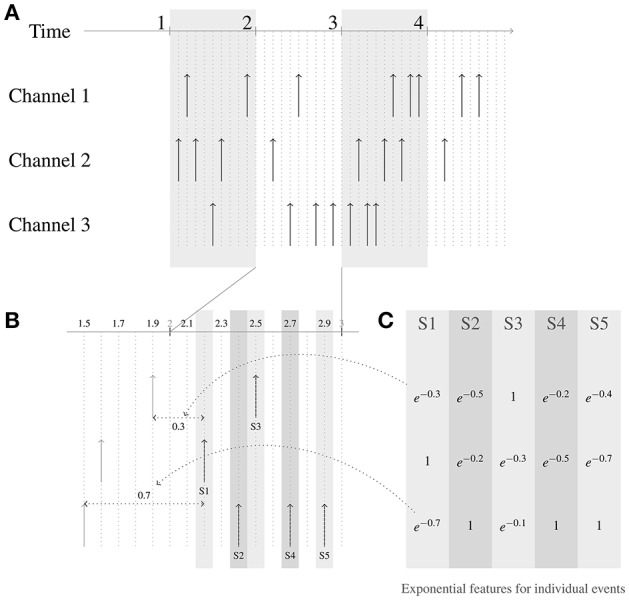Figure 6.

Generation of exponential features for events. Three channels are shown in this example. The time constant parameter t used for generating the features is 1 time unit. The events streams are shown in (A), the zoomed-in picture of the events in the second frame are shown in (B), and the exponential features for this frame is shown in (C). Consider the event at time t = 2.2, labeled S1. In channel 1, the closest event in time to the current event occurred 0.3 time units before, and thus the corresponding feature value for the channel 1 in the exponential feature vector for event S1 is e−(0.3/1). Similarly for channel 3, the closest event in time to the current event occurred 0.7 time units before, and thus the corresponding entry for channel 3 in the exponential feature for S1 is e−(0.7/1). For channel 2, since the current event is at channel 2, the exponential feature value at channel 2 is e−(0/1)=1.
